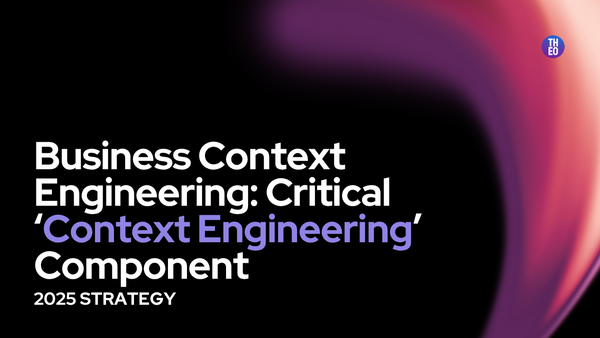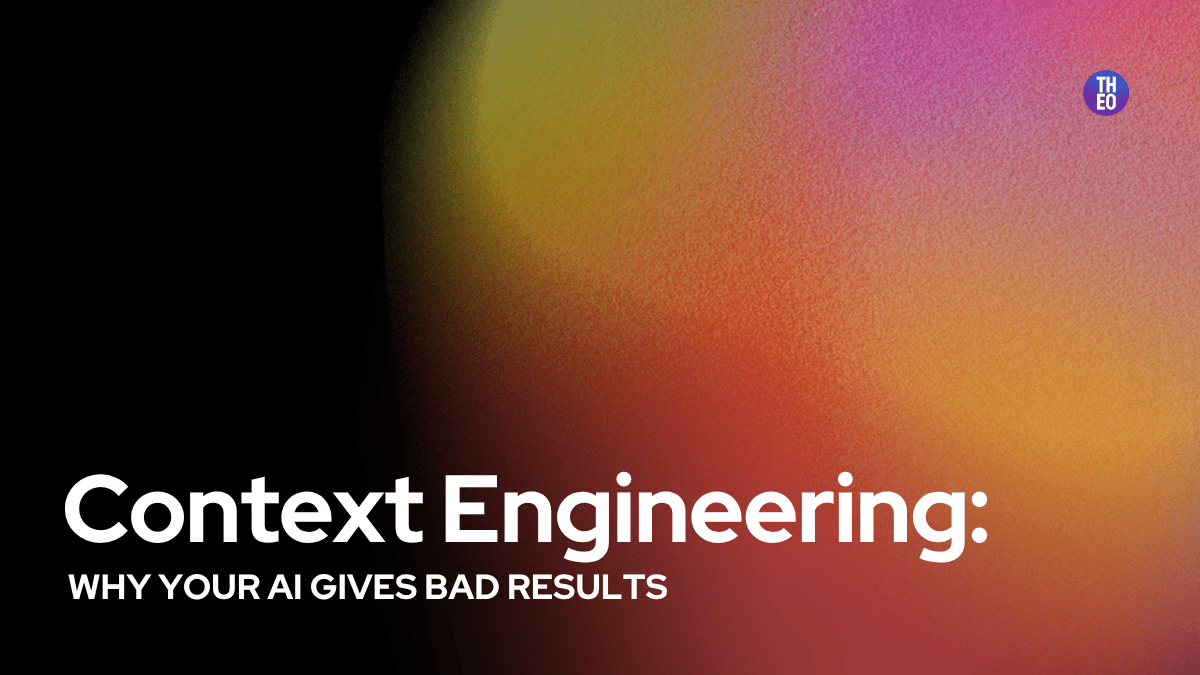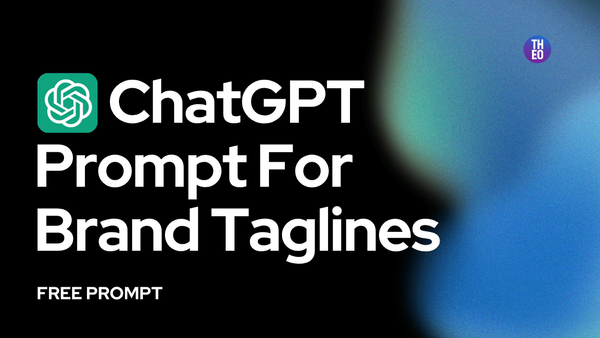AI That Understands My Business: The Complete Guide for Overwhelmed Marketers
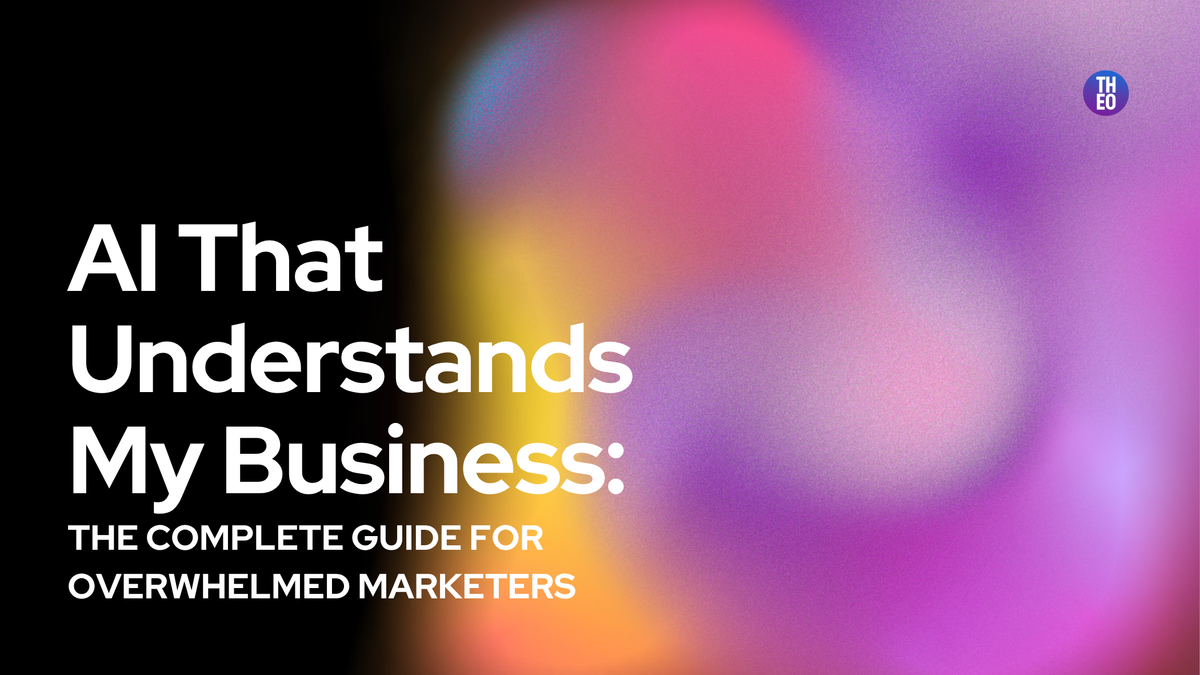
The #1 reason AI tools fail businesses isn't the technology - it's the context gap.
Every marketing conversation with ChatGPT starts the same way: explaining your positioning, your products, your audience nuances. Again. The 15th time this week. The AI gives you generic outputs that miss your brand voice, confuse your product lines, and sound like they could be from any company.
What businesses really need is AI that understands my business - the specific challenges, the unique value proposition, the customer language, and the competitive landscape. Without this deep contextual understanding, even the most advanced AI becomes just another generic content generator that wastes precious time.
Here's the reality: 42% of data leaders cite poor data quality as their primary AI obstacle. Translation? AI doesn't understand your business, so it can't deliver business-specific value. But when companies solve this context challenge, they see productivity gains of 5-10x and save 12+ hours weekly on repetitive explanations.Why Most AI Tools Don't Understand Your Business
The Context Gap Problem
Generic AI tools like ChatGPT are trained on massive datasets, but they don't know the specifics that make your business unique. Every time you start a new conversation, you're essentially teaching the AI about your business from scratch.
The hidden costs of this context gap:
- Time drain: 10-15 iterations per piece of content to get business-appropriate outputs
- Inconsistent messaging: AI mixing up your different products, audiences, or brand voice
- Generic results: Content that could apply to any business in your industry
- Context contamination: AI confusing details from different conversations
What AI Needs To Understand Your Business
For AI to truly understand your business, it needs systematic access to four key areas:
- Company Foundation: Mission, values, positioning, and competitive differentiation
- Product/Service Context: Features, benefits, pricing, and customer use cases
- Audience Intelligence: Customer personas, pain points, communication preferences
- Brand Guidelines: Voice, tone, messaging frameworks, and content standards
Most businesses have this information scattered across pitch decks, websites, CRM notes, and team knowledge—making it impossible for AI to access comprehensively. Research shows that organizations achieving AI success focus on systematic data organization and workflow redesign.
The Business Context Assessment Framework
Before implementing any AI solution, audit your current business context organization using this diagnostic tool:
📊 Business Context Readiness Assessment
Discover how ready your business is for AI that truly understands your context
Company Information
Company Information
Company Information
Company Information
Product/Service Details
Product/Service Details
Product/Service Details
Product/Service Details
Audience Understanding
Audience Understanding
Audience Understanding
Audience Understanding
Content Standards
Content Standards
Content Standards
Content Standards
Your Business Context Readiness Results
0/12
0/12
0/12
0/12
Your Personalized Action Plan
🚀 Ready to Improve Your Context Readiness?
Continue reading to discover the 5 strategies that will help you get better context readiness and make AI truly understand your business.
5 Strategies to Make AI Understand Your Business
1. Create Comprehensive Business Context Documentation
The 2-Hour Business Context Sprint:
📌 Hour 1: Information Gathering
- Collect your latest pitch deck, website copy, and sales materials
- Gather customer testimonials, case studies, and feedback
- Compile product documentation and feature specifications
- Review brand guidelines and content examples
📌 Hour 2: Context Organization
- Create standardized sections: Company, Products, Customers, Brand
- Fill knowledge gaps with specific details AI needs
- Document decision-making criteria and approval processes
- Establish content quality standards and voice examples
This creates a foundational knowledge base that any AI tool can reference consistently.
2. Implement Systematic Context Management
The Context Consistency Protocol:
🛠️ Before Each AI Interaction:
- Load your business context summary (keep it under 2,000 words)
- Specify the audience and content type upfront
- Include relevant product/service details for the specific task
- Set clear quality and tone expectations
🛠️ During Content Creation:
- Reference specific examples from your business context
- Ask AI to maintain consistency with your established voice
- Request explanations when outputs seem off-brand
- Iterate using your documented standards as criteria
🛠️ After Content Generation:
- Review against your business context checklist
- Update context documentation based on new insights
- Save successful prompts and approaches for reuse
- Document what works for different content types
3. Train AI on Your Specific Business Language
Business Vocabulary Development Process:
🤝 Industry Terminology Mapping:
- List industry-specific terms your audience uses
- Define technical concepts in your business context
- Document competitor landscape and positioning
- Clarify internal vs. external language preferences
🤝 Customer Language Documentation:
- Record actual customer phrases from sales calls and support tickets
- Note regional or demographic language variations
- Document formal vs. informal communication preferences
- Create examples of appropriate tone for different stakeholders
🤝 Brand Voice Consistency Guide:
- Provide 3-5 examples of your best brand voice content
- Document what makes your communication unique
- Specify words/phrases to avoid or embrace
- Include examples of appropriate humor, formality, and personality
4. Create Context-Specific AI Workflows
The Business-Aware Content Creation System:
🤘 Step 1: Context Loading (2 minutes)
- Input comprehensive business context summary
- Specify target audience and content goals
- Include relevant product/service details
- Set quality and consistency criteria
🤘 Step 2: Strategic Planning (5 minutes)
- AI suggests content approach based on your business context
- Review recommendations against business goals
- Adjust strategy using your specific market knowledge
- Confirm messaging alignment with brand positioning
🤘 Step 3: Content Generation (10 minutes)
- Generate content using established business context
- Request specific examples from your business experience
- Ensure outputs reflect your unique value proposition
- Maintain consistency with documented brand voice
🤘 Step 4: Context-Based Review (8 minutes)
- Evaluate content against business context standards
- Check for brand voice consistency and accuracy
- Verify alignment with customer communication preferences
- Approve or iterate using established criteria
5. Establish Continuous Context Improvement
Monthly Business Context Optimization:
🚀 Performance Review Process:
- Analyze which AI-generated content performed best
- Identify patterns in successful business context usage
- Document new insights about customer language and preferences
- Update context documentation based on market feedback
🚀 Context Expansion Strategy:
- Add new product features, case studies, and customer insights
- Refine audience personas based on actual customer interactions
- Update competitive positioning as market dynamics change
- Incorporate seasonal patterns and business cycle considerations
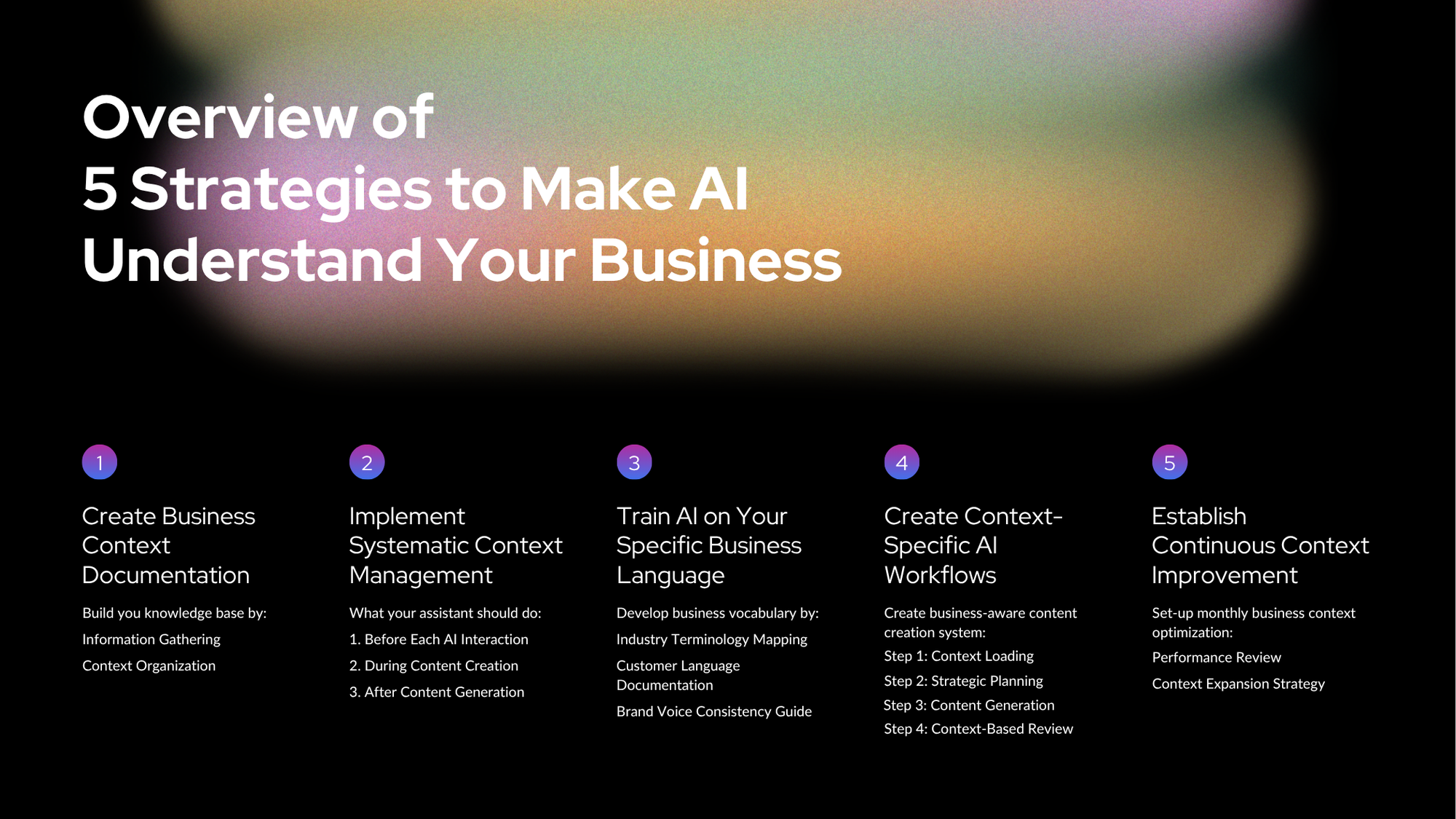
The Business Context Transformation
When you organize your business information systematically, everything changes. Instead of spending hours explaining your positioning to AI, you get accurate, on-brand outputs from the first try.
What becomes possible:
- 10-15 hours weekly saved on repetitive explanations
- Consistent messaging across all AI content
- Strategic marketing that understands your goals
Here's the key: AI works exponentially better when your business context is properly organized. That's the difference between constantly retraining AI tools and having an intelligent assistant who truly knows your business.
Ready to transform how AI understands your business? Use the frameworks above - you'll save hours weekly while creating marketing that actually sounds like your brand.
💡 Wait, what if this sprint process was just the tip of the iceberg? What if you could skip all manual work and get an AI that automatically captures your complete business DNA, then creates system instructions so sophisticated your assistant becomes 10x more strategically intelligent - with just a 2-minute setup?
See how → or get weekly AI marketing tips that actually work for small businesses.


